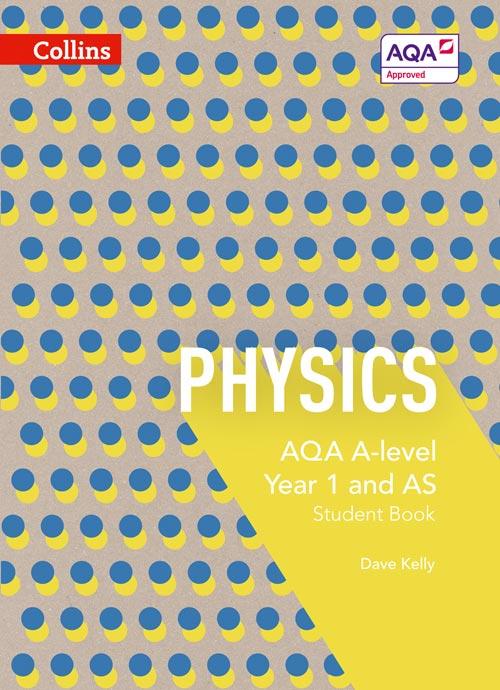

2 inside the Atom


pRIOR KNOWlEDgE
You will be familiar with the nuclear atom and you probably know something about radioactivity. You should be aware of the forces between electric charges and know what the term ‘potential difference’ means.
lEARNINg OBJECTIVES
In this chapter you will learn more detail about the model of the atom and how this model evolved. You will learn more about nuclear decay and the four fundamental interactions will be introduced.


(Specification 3.2.1.1, 3.2.1.2 part, 3.2.1.4 part)

Modern physics is built on two outstandingly successful theories: quantum theory and general relativity. Quantum theory describes phenomena on the atomic and subatomic scale. It has been tested to extraordinary levels of precision. For example, electrons have a magnetic property due to their spin, called the magnetic moment. Quantum theory predicts its value to be 1.001 159 652 181 13 (±8) (in certain units). Recent experimental measurements put this figure at 1.001 159 652 180 73 (±28). The uncertainty in brackets after these figures is in the least significant digit(s). The precision of agreement is better than 1 part in a trillion (1012), like knowing the distance to the Moon to within the thickness of a human hair.

General relativity is used to explain behaviour on an astronomical scale. It also has been tested thoroughly and has come through unscathed (Figure 1). The theory, which predicts that clocks will run slower in a stronger gravitational field, is essential to the accuracy of navigation using the GPS system.

(±0.06” ).”
Attempts to unite the two theories mathematically have so far failed. The most likely candidate for a unified ‘Theory of Everything’ is string theory (Figure 2). This has succeeded in explaining many of the phenomena observed by particle physicists. However, it does not make any unique new predictions that can be tested by experiment. This has led some to suggest that string theory is not science at all. Richard Feynman, the Nobel physicist whose work on quantum theory described the interaction between electrons and light, said,







“It doesn’t matter how beautiful your theory is, it doesn’t matter how smart you are. If it doesn’t agree with experiment, it’s wrong.”
 Earth
Sun
actual position of star apparent position of star
Figure 1 General relativity predicts that light from a star will bend as it passes close to the Sun. The Sun’s own light makes this impossible to detect, except during a solar eclipse. Arthur Eddington photographed the 1919 eclipse from the west coast of Africa. He sent this message to the mathematician Bertrand Russell: “Einstein’s theory is completely confirmed. The predicted angular deflection was 1.72° and the observed angle 1.75°
Earth
Sun
actual position of star apparent position of star
Figure 1 General relativity predicts that light from a star will bend as it passes close to the Sun. The Sun’s own light makes this impossible to detect, except during a solar eclipse. Arthur Eddington photographed the 1919 eclipse from the west coast of Africa. He sent this message to the mathematician Bertrand Russell: “Einstein’s theory is completely confirmed. The predicted angular deflection was 1.72° and the observed angle 1.75°
2.1 Atomic structure
Before 1900, scientists considered the atom a fundamental particle – a particle without structure or constituent parts. A few suggested that there could be something inside the atom, which would help to explain atomic spectra (see Chapter 5), but nobody suspected that the atom itself could be taken apart.
J. J. Thomson’s discovery of the electron changed that – he realised that the electron was a part of the atom that had somehow broken free.
The electron
Physicists in the 19th century had two wonderful new pieces of technology: the vacuum pump and the induction coil. The vacuum pump could create a
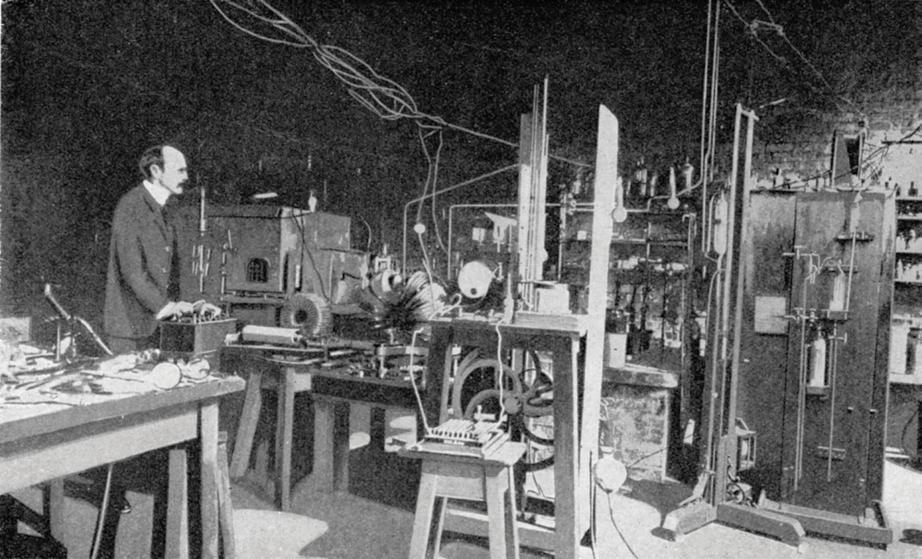
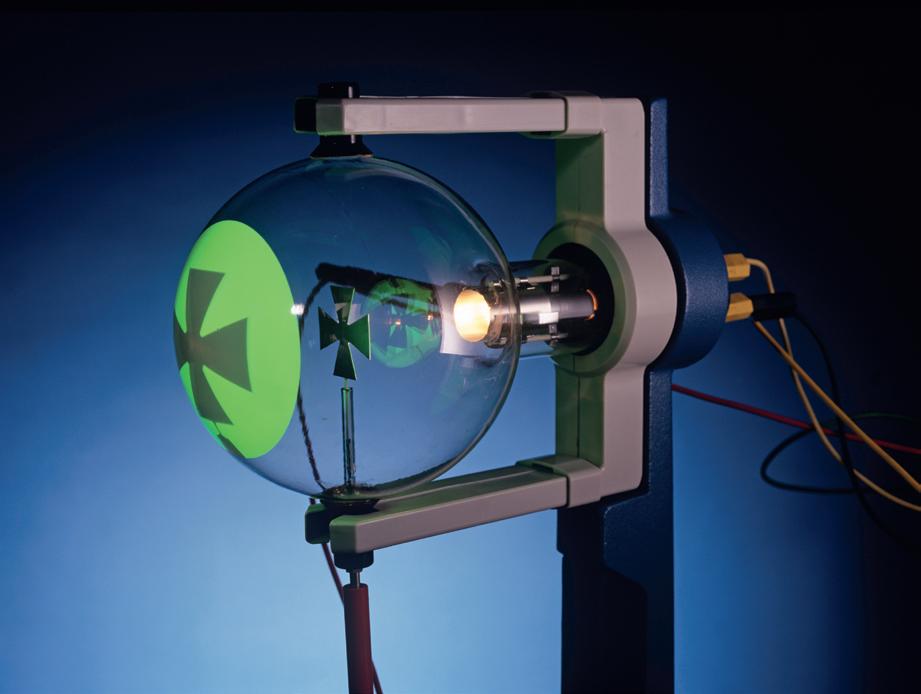
a magnet (Figure 6). He could also deflect the beam towards a positively charged plate. This proved that the cathode rays carried a negative electric charge.
Thomson’s balancing act
Thomson knew that the cathode rays were associated with negative charge, but to prove that they were a stream of identical particles he needed to show that they had a unique mass and charge. Initially, Thomson could not find either of these quantities separately but he was able to measure the charge-to-mass ratio for the cathode rays. This ratio is called the specific charge. For the electron written e/m, where e is the charge carried by the electron and m is its mass. Specific charge is measured in coulombs per kilogram, C kg−1. A constant value of e/m would prove that cathode rays were in fact a stream of identical particles.
very low pressure in a glass tube. The induction coil could generate a large potential difference (voltage) across electrodes placed in the tube. This technology led to the demonstration of radio waves by Hertz, the transmission of wireless telegraph signals by Marconi, the discovery of X-rays by Röntgen and the discovery of the first subatomic particle, the electron, by Thomson at the Cavendish Laboratory in Cambridge (Figure 3).

In Thomson’s ‘discharge tube’ (Figure 4), a large potential difference was applied across two metal plates inside a partially evacuated glass tube. This caused a fluorescent glow from the tube.
Thomson was working on the hypothesis that cathode rays (Figure 5) were in fact a stream of electrically charged particles. He thought that these were emitted from the negatively charged plate (the cathode). A large potential difference accelerated particles; they travelled at high speed across the tube until they struck the coated glass, causing the glow. Thomson showed that he could deflect the beam with
Figure 5 Discharge tubes, or Crookes tubes, were the particle accelerators of their day. The fluorescence, first seen in the glass, became brighter with fluorescent coatings. This modern tube shows a metal object, a Maltese cross, casting a shadow by blocking the cathode rays. Figure 3 Thomson at work in the Cavendish Laboratory, Cambridge Figure 4 Thomson discovered the electron using this discharge tube at the Cavendish Laboratory, in 1897. In the following year, there was a formal toast at the laboratory’s annual dinner: “The electron: may it never be of use to anybody.”cathode (source of electrons) anode
Thomson used magnets to de ect the stream of cathode rays. to electrometer
pathway of unde ected stream of cathode rays
phosphorescent coating
QUESTIONS
1. a. Thomson repeated the experiment using different metals for the cathode. Why?
b. Changing the metal made no difference to the path of the cathode rays. What does this suggest?
(a) Electrons are attracted to the upper plate. They follow a parabolic path while they are in the electric eld
Thomson was able to find the specific charge of the electron using electric and magnetic fields at right angles to one another. His apparatus (Figure 6) had electric and magnetic fields arranged so that the forces from each field exactly cancelled out and so the cathode rays carried on in a straight line (Figure 7). By equating the forces from the two fields, Thomson was able to calculate a value for e/m (see Assignment 2).
Thomson then applied his method to the particles emitted by the photoelectric effect (see Chapter 8) and found that they had the same value for e/m as cathode rays. In 1899, Thomson concluded that cathode rays were “a splitting up of the atom, a part of the mass of the atom getting free and becoming detached from the original atom”. Thomson had discovered the electron. Later, Thomson measured the electron’s charge, by finding the velocity of falling charged water droplets, to be of the order of 10−19 C. He then arrived at a value for the mass of the electron of 3 × 10−29 kg. This is respectably close to the modern measurement of 9.109 × 10−31 kg.
Further experiments by Robert Millikan found a more accurate result for the charge on an electron. The currently accepted value is
e = −1.602 176 57×10−19 C
The value of the specific charge of the electron is e/m = −1.758 820 088 (±39) × 1011 C kg−1
There is no evidence to suggest that the electron has any internal structure, or has any other constituents. It is still considered to be a fundamental particle.
(b) In a magnetic eld electrons are made to travel in a circular path.
Magnetic eld lines go into the plane of the page.
(c) Thomson balanced the effects of the magnetic and electric elds so that the electrons travelled in a straight line.
CATHODE RAYS
By J. J. THOMSON, M.A., F.R.S., Cavendish Professor of Experimental Physics, Cambridge.The experiments discussed in this paper were undertaken in the hope of gaining some information as to the nature of cathode rays . . . According to the almost unanimous opinion of German physicists they are due to some process in the aether1 . . . another view of these rays is that . . . they are in fact wholly material, and that they mark the paths of particles of matter charged with negative electricity . . . The following experiments were carried out to test some of the consequences of the electrified-particle theory.
Two coaxial cylinders with slits in them are placed in a bulb connected with a discharge tube; the cathode rays . . . do not fall upon the cylinders unless they are deflected by a magnet. The outer cylinder is connected with the Earth, the inner with the electrometer. When the cathode rays (whose path was traced by the phosphorescence on the glass) did not fall on the slit, the electrical charge sent to the electrometer . . . was small and irregular; when, however, the rays were bent by a magnet so as to fall on the slit there was a large charge of negative electricity sent to the electrometer. I was surprised at the magnitude of the charge . . . Thus this experiment shows that however we twist and deflect the cathode rays by magnetic forces, the negative electrification follows the same path as the rays, and that this negative electrification is indissolubly connected with the cathode rays.
[Thomson goes on to discuss the effect of an electric field on cathode rays . . .]
Deflexion of the Cathode Rays by an Electrostatic Field
At high exhaustions (a strong vacuum or low pressure) the rays were deflected when the two aluminium plates were connected with the terminals of a battery of small storage-cells; the rays were depressed when the upper plate was connected with the negative pole of the battery, the lower with the positive, and raised when the upper plate was connected with the positive, the lower with the negative pole. The deflexion was proportional to the difference of potential between the plates, and I could detect the deflexion when the potential difference was as small as two volts. It was only when the vacuum was a good one that the deflexion took place.
ASSIgNmENT 1: UNDERSTANDINg THOmSON’S ExpERImENTS (PS 1.2, PS 2.1)
J. J. Thomson was awarded the 1906 Nobel Prize for Physics “for his theoretical and experimental investigations on the conduction of electricity by gases”. Read the extract from J. J. Thomson’s paper Cathode Rays in Figure 8. You may need to do some brief Internet searches to help you to answer the questions below.
Questions
A1 In Thomson’s first experiment (detail shown in Figure 6), how were the cathode rays deflected? How could Thomson see what path they took? What did he use to detect the cathode rays?
A2 How did Thomson’s view of cathode rays differ from that of the ‘German physicists’ that he mentions?
A3 In the second experiment described by Thomson he says that a good vacuum (low pressure) is needed to see the cathode rays. What does this suggest about cathode rays?
A4 Thomson says that the deflection is proportional to the difference in the potential of the (horizontal) plates. What does this suggest about cathode rays?
A5 The Crookes tube apparatus had been around for at least 40 years before J. J. Thomson used a version of it to identify the electron. Why did it take so long?
ASSIgNmENT 2: mEASURINg THE SpECIfIC CHARgE ( e/m ) Of THE
ElECTRON (MS 2.3, PS 1.2, PS 2.4, PS 3.2, PS 3.3, PS 4.1)
It is possible to carry out or observe a modern version of Thomson’s experiment using the apparatus in Figure A1. If you are not able to see this first-hand, there are simulations on the Internet. Your aim in this assignment is to understand how the apparatus works and to get a value for e/m, known as the specific charge.

You should be able to vary three independent factors:
› The accelerating voltage, Va. Increasing this makes the electrons travel faster (see Figure A2).
› The deflecting voltage, Vd . Increasing this increases the force on the electron as it passes between the plates.
› The current in the magnetic field coils, I Increasing this makes the magnetic field stronger and so increases the force on the electron.
Start with I = 0 and Vd = 0. The beam should be straight.
Keeping Va constant:
1 Vary Vd while I = 0
2 Vary I, while Vd = 0
3 Find a pair of non-zero values for Vd and I so that the beam is straight.
When the beam is straight, the electric force due to the deflection plates balances the force due to the magnetic field. By equating these forces, you can find the ratio e/m. It is given by: e/m = V 2 d
electron path
de ecting plates, potential difference = Vd
electron gun
low voltage heater
magnetic force
electric force
accelerating voltage = Va BEWARE EHT
Helmholtz magnetic eld coil
You should have values for Va and Vd
d is the distance (m) between the deflection plates.
B is the magnetic flux density between the coils. For Helmholtz coils the magnetic flux density is:
B = 8 µ0NI 5R√5
where
R is the average radius of the coils = separation between the coils
N is the number of turns in each coil
I is the current through the coils
µ0 = 4π×10−7 N A−2 = permeability of free space
The plum pudding atom
Physicists construct models that describe some aspect of the real world, such as the kinetic theory of gases, or the Big Bang model for the beginning of the Universe. Naturally, physicists began to suggest models for the atom.
A first thought (Thomson’s) was that atoms were made entirely of electrons. He suggested that a hydrogen atom might consist of around 1000 electrons. However, there had to be some positive charge to cancel out the negative charge carried by all those electrons. This was necessary or else electrostatic repulsion would push apart the whole atom. How much mass did this positive charge have and where was it?
Thomson’s plum pudding model (Figure 9) pictured the atom as a uniform, positively charged cloud with tiny electrons embedded in it, like plums in a pudding.
Helmholtz magnetic eld coils
Questions
A1 What shape is the path of the cathode rays when there is a potential difference across the horizontal plates? What shape is the path when there is only a magnetic field?
A2 What factors did Thomson need to control in his experiment?
A3 Use the formula for e/m on the previous page to calculate a value for e/m. Compare this with the accepted value.
A4 How might the precision and accuracy of the school experiment be improved?
The
pudding model did not stand the test of time, though. Its fate was finally decided by experiments carried out at Manchester University in 1909.
KEY IDEAS
› The electron is a fundamental particle.
› The electron has a mass of 9.1×10−31 kg and carries a negative charge of 1.6×10−19 C.
› The charge-to-mass ratio, or specific charge, is very high for the electron: e/m = −1.8×1011 C kg−1
› The plum pudding model represented atoms as tiny electrons embedded in a positively charged background of uniform density.
2.2 the discovery of the nucleus
The first steps in nuclear physics were taken early in 1909. Hans Geiger and his research student Ernest Marsden were conducting an experiment to investigate the scattering of alpha particles as they collided with gold atoms (Figure 10). The experiment was overseen by Ernest Rutherford. He had shown (see section 2.4) that an alpha particle is a tightly bound group of two neutrons and two protons – a helium nucleus – that is emitted at high velocity from some radioactive isotopes.
Geiger and Marsden used radium as the source of the alpha particles, which were beamed towards a thin gold foil. The alpha particles, after passing through the foil, hit a zinc sulfide screen. When each particle hit the screen there was a flash of light (scintillation). In hours of painstaking observations, they recorded the number of scintillations, and hence alpha particles deflected at each angle. Rutherford suggested that they should look for alpha particles reflected from the metal surface. To their great surprise, a small fraction of the alpha particles, about 1 in 8000, bounced back from the gold foil.
Alpha particles have a positive charge, known to be twice the magnitude of the charge on the electron. They are also relatively heavy, about 8000 times as massive as an electron. An alpha particle travelling at 10 000 km s−1 should not have been bounced back by a gold atom that consisted of a few tiny electrons stuck into a positive ‘pudding’. Rutherford was amazed. He said later, “It was quite the most incredible event that has ever happened to me. It was almost as incredible as if you fired a 15 inch shell at a piece of tissue paper and it came back and hit you.”
The plum pudding model of the atom had to go. Rutherford deduced from the scattering results that all the positive charge, and almost all the mass, of an atom must be concentrated in the centre of the atom. He called this the nucleus
Rutherford suggested that the electrons carried all the negative charge and that they orbited the nucleus through empty space, a relatively long way from the nucleus. Most of the alpha particles passed through the gold foil with small or zero deflections; the particles were simply too far away from the nucleus of a gold atom to be affected by it. Very occasionally, an alpha particle passed so close to a gold nucleus that it would be repelled by the positive charge and suffer a large deflection (Figure 11).
Rutherford used the results of these scattering experiments to calculate the size of the nuclear atom. The nucleus has a radius of the order of 10−15 m, compared with the radius of the atom, which is of the order of 10−10 m. Rutherford’s model of the atom is often pictured as a miniature solar system: the electrons orbit the nucleus rather like planets orbiting the Sun. This image does not really reflect the true scale of the atom. Picture the atom scaled up, so that the nucleus is the size of the Sun; the electrons would orbit ten times further from the nucleus than Pluto is from the Sun. The atom is almost all empty space with an extremely small, dense nucleus.
paths of alpha particles
gold foil, hundreds of atoms thick nucleus
of gold atom Figure 11 Rutherford scattering source of alpha particles to vacuum pump microscope zinc sul de screen gold foil evacuated metal boxQUESTIONS
2. In the film The Men Who Stare at Goats, General Hopwood tries to run through a wall. Scientists had told him that the atoms in his body and those in the wall are almost all empty space. This is true. Explain to the General why he still cannot run through a wall.
3. If the atomic nucleus were the size of a football placed on the centre circle at Wembley stadium, where might you find the electron’s orbit?
2.3 inside the nucleus
Rutherford’s model of the nuclear atom has a positively charged nucleus orbited by negatively charged electrons. The particles that carry the positive charge in the nucleus are protons. The number of protons is the proton number, or the atomic number, and its symbol is Z. In a neutral atom – an atom that carries no overall charge – the number of protons in the nucleus is equal to the number of electrons orbiting the nucleus, since these have equal but opposite charge. The atomic number of an atom is therefore also the number of electrons in the neutral atom. The atomic number for each element indicates its place in the Periodic Table. Hydrogen, with Z = 1, has one proton in its nucleus and one electron in orbit. Helium, with Z = 2, has two protons and two electrons, and so on through the Periodic Table, to the heaviest naturally occurring atom, uranium, which has 92 protons and 92 electrons.
The strong nuclear force
A nucleus composed entirely of positive charges would not hold together. Positive charges repel one another. At the very small separations inside the nucleus, the electrostatic forces pushing the protons apart are very large. There must be another force, acting inside the nucleus, that holds the nucleus together. This force is the strong nuclear force or strong interaction.
The strong nuclear force has a very short range; it has little effect at separations greater than about 3 fm (3×10−15 m). When two protons are 3 fm apart or closer, the strong interaction acts as an attractive force, pulling the protons closer together. This happens until the separation is about 0.5 fm. Closer than this, the strong interaction becomes highly repulsive (Figure 12). The overall effect of the force is to pull the nucleus together, but the repulsive action prevents it from collapsing to a point.
dominates at large separations. Strong nuclear force dominates at small separations.
At distances of less than about 2 fm, the strong nuclear attraction between two protons is larger than the electrostatic repulsion (Figure 13) so the nucleus is held together (Figure 14).
The neutron
For larger nuclei, there is still a problem. The strong nuclear force acts over a much shorter range than electrostatic repulsion. It is just not possible to get all of the protons close enough together for the strong nuclear force to overcome the electrostatic repulsion. There must be some other particle, or particles, in the nucleus that help to glue it together. The particle is the neutron; it adds extra strong nuclear force, without any electrostatic repulsion. The strong nuclear force between two neutrons, or between a neutron and a proton, acts in the same way as it does between two protons (see Figure 12).
The neutron is a particle with a mass of similar value to that of the proton (Figure 15), but the neutron carries no electric charge (Table 1). It does exert a strong nuclear attraction on protons and on other neutrons. The number of neutrons in a nucleus is known as the neutron number, N.
Protons and neutrons are the only particles in the nucleus. They are referred to as nucleons
The strong nuclear force acts between any pair of nucleons, whether that is two protons, two neutrons or a proton and a neutron. Electrostatic repulsion acts only between two protons, because of their positive charge.
polonium source Geiger counter
~ 1000 V beryllium
Figure 15 Chadwick discovered the neutron in 1932. Neutrons are hard to detect, so his ingenious experiment allowed neutrons to collide with protons, which were detected. He was also able to show that neutrons and protons have a very similar mass.
QUESTIONS
4. Work out the specific charge (charge-to-mass ratio) of the proton. Use the data in Table 1.
An atom of hydrogen has one proton in its nucleus and one electron in orbit around it.
Building nuclei
An atom of helium has two protons and two neutrons in its nucleus, and two electrons in orbit around it.
The simplest atom of all is hydrogen. It has one proton in its nucleus and no neutrons. It has only one electron orbiting the nucleus. The most common form of helium has two protons and two neutrons in its nucleus and, therefore, there are two electrons in orbit around it (Figure 16).
The total number of nucleons in the nucleus of an atom is referred to as its nucleon number, or mass number, A. This is the number of protons plus the number of neutrons, so A = Z+N
The nuclear composition of an atom can be described using symbols. The most common form of carbon has six protons and six neutrons in its nucleus. It can be written as 126C. The upper number is the nucleon (mass) number, A; the lower number is the proton (atomic) number, Z
In general, an element X with an atomic number Z and nucleon number A is written as A Z X. Using this system, hydrogen is represented as 1 1H, and helium is represented as 4 2He. The nucleon number is also the atomic mass number. The atomic mass number is always an exact integer, since it counts the number of nucleons in the nucleus. The relative atomic mass of an element is slightly different. It is found by comparing the mass of the atom to that of the most common form of carbon atom, 126C, whose mass is 19.93×10–27 kg. This atom is defined as having a mass of exactly 12 ‘units’. This ‘unit’ is known as the unified atomic mass unit, u, and has the value 1.661×10–27 kg.
The mass of an atom, in atomic mass units, is not exactly equal to the nucleon number. This difference, and its implications, is for discussion in Book 2. However, the relative atomic mass of hydrogen is 1.0078 u, which is almost the same as its nucleon number, 1. Similarly, helium, with nucleon number 4, has a relative atomic mass of 4.0026 u. Indeed all nuclei have relative atomic masses that are very close to their nucleon numbers (see Table 2). To an accuracy of three significant figures the mass of the proton, the mass of a hydrogen atom and the mass of a neutron are all equivalent to 1 atomic mass unit.
All nuclei carry a net positive charge equal to their proton number multiplied by the proton charge. We can calculate the specific charge of a nucleus, in C kg –1, as follows:
specific charge = proton number × 1.602 × 10–19 nuclear mass where the nuclear mass is approximately equal to nucleon number × 1.66 × 10–27 kg.
For example, to a first approximation the specific charge of an uranium-238 nucleus, 238U, is:
92 × 1.602 × 10–19 238 × 1.661 × 10–27 = 3.730 × 107 C kg–1
(Using a more precise value for the nuclear mass of uranium-238, 238.05076 u, would make only a very small difference to this result.)
Isotopes
Elements can exist in more than one atomic form. Though the simplest atom, hydrogen usually has only one proton as its nucleus, some hydrogen atoms have one or two neutrons in their nucleus. These different forms of hydrogen are isotopes (Figure 17).
The extra neutrons do not affect hydrogen’s chemical behaviour; for example, all three isotopes can combine with oxygen to make water.
The different isotopes of an element are chemically identical. This is because their atoms have the same number of electrons. Isotopes also have the same number of protons in their nucleus. The difference between the isotopes of an element is simply the number of neutrons that they have. This makes some isotopes heavier than others. The most common form of carbon has six protons and six neutrons in its nucleus; this isotope is carbon-12. Carbon-13 has six protons and seven neutrons; carbon-14 has six protons and eight neutrons (see Table 3).
2.4 rAdioActivity
QUESTIONS
5. An isotope of uranium, atomic number 92, has 235 nucleons in its nucleus. How many protons, neutrons and electrons are there in a neutral atom of uranium-235?
92
6. Uranium-238, 238 U, is another isotope of uranium. How does it differ from uranium-235?
7. Calculate the specific charge of each of the nuclei in Table 2.
8. The lighter elements, like carbon and oxygen, tend to have equal numbers of protons and neutrons in their nuclei. In heavier elements, there are always more neutrons. Explain why this is so.
The discovery of radioactivity owed something to chance. In 1896, Henri Becquerel was researching the action of light on fluorescent materials. He was investigating the possibility that light might cause these fluorescent materials to emit X-rays and so darken photographic plates. Becquerel’s technique was to wrap the unexposed film in black paper and place a thin copper cross between the film and the fluorescent material that he was investigating. He would then expose the fluorescent material, one of which was uranium salts, to sunlight. For some weeks his experiments had produced only negative results and, when the skies turned overcast, he put all the apparatus, uranium salts, screen and film, into a dark cupboard to await sunnier weather. After four days of continuous cloud cover, Becquerel grew tired of waiting and decided to develop the film anyway. To his astonishment, the photographic plate had darkened strongly, with the image of the copper cross standing out white against a dark background.
KEY IDEAS
› The diameter of a nucleus is of the order of 10−15 m. The diameter of an atom is 100 000 times larger.
› The nucleus contains two different particles of approximately equal mass, the neutron and the proton.
› Protons are positively charged. Neutrons are uncharged.
› Protons and neutrons are affected equally by the short-range strong nuclear force. This is a short-range force of attraction, up to a distance of about 3 fm, but is highly repulsive at distances closer than about 0.5 fm. This holds the nucleus together.
› The proton number, Z, is the number of protons in a nucleus. The nucleon number, A, gives the total number of nucleons in a nucleus. The nucleus of element X can be represented by A Z X.
› Isotopes of an element have the same number of protons and electrons. They are chemically identical. Different isotopes have different numbers of neutrons in their nuclei.
Becquerel reported that he had discovered a natural radiation that could penetrate paper. He also found that these rays could cause a gas, like air, to conduct electricity. Later, scientists found that this process, known as ionisation, occurs because the rays can knock an electron completely out of its atom. This turns a neutral atom into an ion pair: a negatively charged electron and the positively charged ion it has left behind. The electron and the positive ion are free to move so that the gas becomes an electrical conductor. Radioactive sources can be detected through this effect, for example by causing an electroscope to be discharged (Figure 18).
radioactive source
insulation
metal plate
gold leaf
glass window
case connected to earth
Figure 18 The ions created by the radioactive source discharge a charged electroscope.
metal stem metal discMarie Curie and her husband Pierre took Becquerel’s work further. They discovered other materials, thorium and radium, which also gave off ionising rays. In 1903, the Nobel Prize for Physics was awarded jointly to Becquerel and the Curies for the discovery of radioactivity.
Activity of a radioactive source
Radiation that can ionise gases and cause skin burns must carry a significant amount of energy. This energy comes from changes within the nuclei of the atoms of the radioactive source.
Isotopes, such as radium-226, that emit ionising radiation are radioisotopes Their nuclei are unstable, which means that they are likely to decay to a lower energy state at some time in the future. They emit radiation in the process. Sometimes this decay changes the original (parent) nucleus to a different element altogether. This new (daughter) nucleus may be stable, or it may be a new radioisotope – that will in turn decay and emit more radiation.
Radioactive decay is a random event. It is impossible to predict exactly when any particular unstable nucleus will decay, just as when throwing a die you cannot predict when you will get a six. It is possible, though, to calculate the probability that it will decay in a certain time. This will be discussed in Book 2.
The nuclei of some radioisotopes are more likely to decay in a given time than those of other radioisotopes. This means that these radioisotopes emit more radiation in a given time. They are more active. The activity, A, of a radioisotope is defined as the number of nuclei that decay in one second; this is equal to the number of emissions per second. Activity is measured in the unit becquerel. If a source has an activity of 1 becquerel, 1 Bq, then on average one of its nuclei decays every second. This is an extremely small unit and activities of kilobecquerel, kBq, or megabecquerel, MBq, are much more likely.
Although the becquerel is the SI unit of activity, an older unit, still commonly used, is the curie, Ci. One curie is the number of disintegrations per second in one gram of radium −266 – which is equivalent to 3.7 × 1010 Bq.
Alpha, beta and gamma rays
It quickly became clear that the rays emanating from radioactive elements were not all the same. Rutherford realised that there were at least two different sorts of rays. One type, which he called alpha (α) radiation, was easily absorbed by materials in its path. The other type, which was more penetrating, he named
beta (β) radiation. A third type of very penetrating radiation became known as gamma (γ) rays. Alpha, beta and gamma rays all cause ionisation. This is how they are detected. Photographic film, Geiger counters and cloud chambers all detect the ionisation caused by radiation. Cloud chambers (Figure 19) reveal the tracks left by radiation (Figure 20) and were very important in the early days of particle physics. Cloud chambers were replaced by bubble chambers and later spark chambers.
A cloud chamber contains a gas, often air, and a highly saturated vapour. Ionising particles such as beta particles ionise the air as they pass through the chamber. The ions produced act as sites for the vapour to condense around. The liquid droplets that form along the trails of ionised air are just big enough to see and photograph.
Alpha radiation
Rutherford passed alpha radiation through strong electric and magnetic fields. He showed that it consists of particles that carry a positive charge equal in magnitude to 2e, where e is the charge on the electron. He also found that the alpha particles have a short range in air, only a few centimetres. Thin sheets of paper could also stop alpha particles. It took an ingenious experiment, completed in 1908, to show what an alpha particle actually is (see Figure 21).
Alpha particles are actually helium nuclei. They are a tightly bound group of two protons and two neutrons, with a charge of +2e and a mass of about 8000 times that of the electron. This combination of relatively large mass and strong electric field makes them highly ionising. When alpha particles pass through a material, they have frequent collisions with atoms. The alpha’s large kinetic energy means that it can easily knock an atomic electron out of its orbit. The alpha’s large momentum means that it is hardly deflected by the collision. An alpha particle will
electrode electrode
a vacuum
In alpha decay, the nucleon number, A, is reduced by 4 and the proton number, Z, is reduced by 2. In a nuclear decay equation, using X as the symbol for the parent radioisotope and Y for the daughter, the alpha decay can be written:
Z A X → A–4 Y + 24He Z–2
An example of an alpha emitter is radium-226. Radium-226 decays into radon, Rn, gas. This decay can be written:
226Ra → 222Rn + 24He 88 86
QUESTIONS
10. When scientists first discovered alpha rays, they thought that they had no charge: the rays did not appear to be deflected by electric or magnetic fields. Explain what you think the problem might have been with these early experiments.
undergo thousands of collisions in a short distance until it comes to a halt. After some time it will collect two electrons to become a neutral helium atom.
Decay by alpha emission tends to occur in large unstable nuclei. Inside the nucleus, a stable group of two neutrons and two protons forms. This is expelled from the nucleus at high speed. The emitting, parent, nucleus is transformed into a new daughter nucleus. An example is shown in Figure 22.
11. An alpha particle travelling through air leaves a trail of ionised atoms and molecules in its wake. Calculate the specific charge of a doubly ionised oxygen atom – that is, an 168O atom that has lost two electrons. You may assume that the mass of the orbital electrons is negligible compared with the mass of the nucleus.
12. The electronvolt (eV) is a unit of energy (see Chapter 3). An alpha particle is emitted with an energy of around 5 MeV. It takes 10 eV, roughly, to ionise an atom. Estimate how many ion pairs an alpha particle will create before it comes to a stop.
238U 92
234Th 90 4He (α) 2 +
A uranium-238 nucleus is made up of 92 protons and 146 neutrons. It decays to thorium-234 (90 protons and 144 neutrons) by emitting an alpha particle (2 protons and 2 neutrons).
Figure 22 Alpha emission from uranium-238
The total number of nucleons (protons and neutrons) is not changed by a radioactive decay. The total charge also stays unchanged, so the sum of the proton numbers must be the same before and after any emission.
2 INSIDE THE ATOM 36
13. Radioisotopes that emit only alpha particles are considered not hazardous, as long as they are kept at least five centimetres from the body. However, they are extremely dangerous if they come into contact with the body, for example if someone swallows or breathes in the isotope. Explain why this is.
Beta radiation

Beta particles are much more penetrating than alpha particles. They have a range in air of up to several metres and can pass through thin sheets of an absorber such as plastic or paper. A magnetic field will deflect beta particles much more easily than alpha particles and in the opposite direction. Beta particles are also deflected by an electric field and in a way that shows them to be negatively charged (Figure 24).
Experiments using magnetic fields showed that beta particles have exactly the same charge-to-mass ratio as electrons. In fact, beta particles are electrons, even though they come from the nucleus. Beta decay occurs in an unstable nucleus when one of the neutrons decays into a proton and an electron. The proton remains in the nucleus but the electron is emitted at very high speed, often more than 90% of the speed of light. Beta decay leaves the nucleon number of the radioisotope unchanged: there is now a proton instead of a neutron. This extra proton makes the proton number increase by one. Beta decay could therefore be written:
Z A X → A Y + –1 0 e Z+1
However, we now know that this decay equation is incomplete. A particle called an antineutrino is also emitted. This will be discussed in Chapter 3.
Beta particles cause ionisation by colliding with atomic electrons. Because the beta particle and the electron have the same mass, the beta particle may be widely deflected by a collision. Not all collisions will cause ionisation; some may ‘excite’ the atomic electron to a higher energy level. Other collisions may just deflect the beta particle with no change in its kinetic energy. The beta particle has a much less
(b)
alpha gamma
alpha particles are deflected into the page
gamma radiation is undeviated
beta particles are deflected out of the page
Figure 24 The effect of electric and magnetic fields on alpha, beta ( β–) and gamma rays
densely ionising track than an alpha particle and its path will be more tortuous (see Figure 20), especially as it begins to slow down.
Some nuclei decay by emitting positively charged beta particles. These have exactly the same mass and other properties as a negative beta particle, but their charge is positive. There is more about these positive electrons (positrons) in Chapter 3.
QUESTIONS
15. The isotope carbon-14 is a beta emitter that decays into nitrogen, N. Write an equation to represent the decay.
16. The cloud chamber pictures in Figure 20 show the tracks left by alpha particles and beta particles. Explain the difference in the tracks.
17. The isotope magnesium-23 ( 23Mg) decays by positive beta emission to sodium (Na). Write an equation to represent the decay. State the difference between the parent nuclei and the daughter nuclei.
37 2.4 Radioactivity
Figure 23 There is a small amount of a radioactive isotope in a smoke detector. This causes the air inside to be ionised. A small electric current flows across an air gap. When large smoke particles enter, they interfere with the current, causing the alarm to sound.Gamma radiation
Soon after the discovery of radioactivity, it was realised that at least part of the radiation was very penetrating indeed. In 1900, Paul Villard discovered that some rays could pass through thick sheets of metal and still have the ability to blacken photographic plates. He also discovered that electric or magnetic fields could not deflect the radiation (Figure 24). Villard had discovered gamma radiation.
Gamma radiation is high-energy electromagnetic radiation. It has no charge and no mass. Gamma rays can cause ionisation (Figure 25). However, the probability of interaction with an electron is lower than that for alpha or beta particles and so gamma radiation is much less densely ionising.
Gamma emission changes the energy of the parent nucleus, but does not change its nuclear composition.
› Gamma radiation is high-energy, penetrating electromagnetic radiation.
› During gamma decay the nucleus loses energy, but does not change to a different isotope.
2.5 fundAmentAl interActions
KEY IDEAS
› Some nuclei are unstable. These nuclei decay, emitting ionising radiation in the process. Radioactive decay may change the nucleus to one of a different isotope.
› Unstable nuclei can emit alpha, beta or gamma rays, or a combination of these.
› An alpha particle is a helium nucleus. An alpha decay can be written:
Z A X → A–4 Y + 24He Z–2
› A beta particle is a high-energy electron emitted from the nucleus. A beta decay can be written:
Z AX → A Y + –1 0 e Z+1 plus an antineutrino (see Chapter 3).
The search inside the atom revealed two new forces. The strong nuclear force, which acts to hold nuclei together, has been discussed earlier (section 2.3). A second new force, known as the weak interaction or weak nuclear force, was needed to explain some kinds of radioactive decay.
Scientists now believe that there are only four fundamental forces (Table 4 and Figure 26).
Force Relative strength
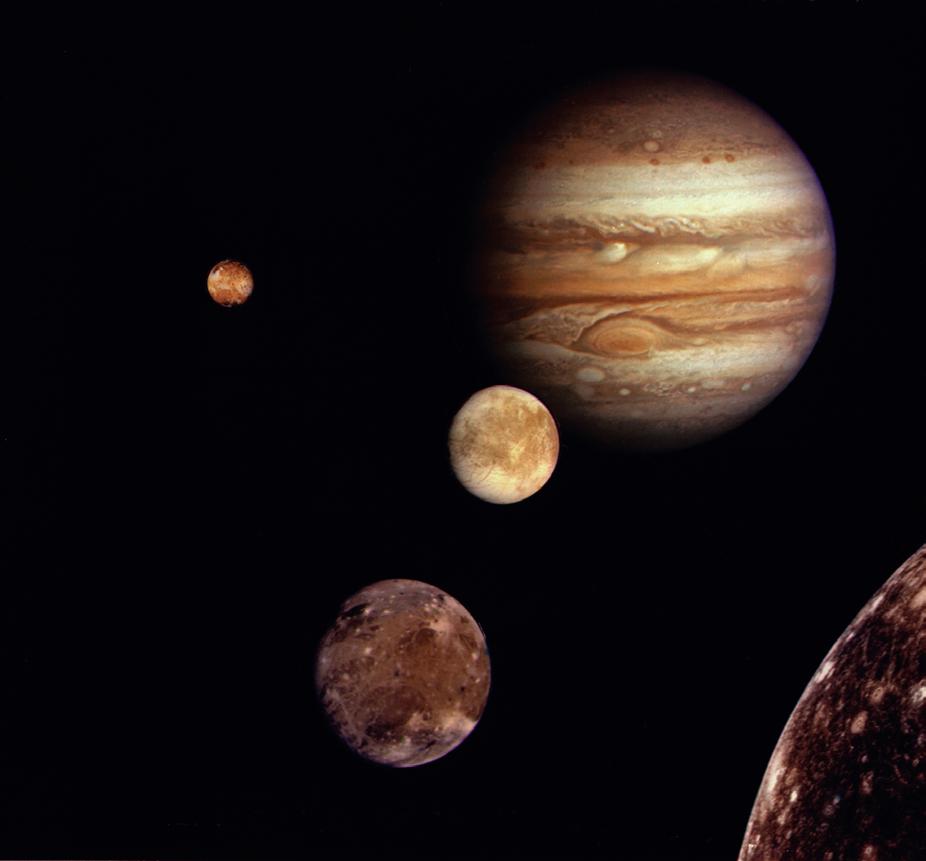 Figure 26 Although gravity is the dominant force on the scale of planets and stars, within the nucleus it is the weakest of the four fundamental forces.
Figure 26 Although gravity is the dominant force on the scale of planets and stars, within the nucleus it is the weakest of the four fundamental forces.
The electromagnetic force holds atoms together. It ties electrons into orbits and binds atoms into molecules. This force acts between all charged particles. Electromagnetic forces have an infinite range, though the strength of the interaction decreases with distance. Because there are two charges, positive and negative, the electromagnetic force can be either attractive or repulsive. Two similar charges repel each other. Two particles carrying opposite charges will attract each other.
Electromagnetism is responsible for the everyday forces between objects. Contact forces, friction, air resistance and tension are all electromagnetic in origin (Figure 27).

Gravity is the other force that has a noticeable impact on our lives. Every mass in the Universe attracts every other mass, because gravity is always an attractive force and it has infinite range (Figure 28). The strength of the attraction between two objects depends on their masses and on the distance between them. On the atomic and nuclear scale, the effect of gravity is negligible.

The strong nuclear force acts inside protons and neutrons and holds them together. The attraction also acts between nucleons and it is this force that holds the nucleus together. Although it is the strongest of the four forces, it has no effect outside the nucleus. This is because it’s range is so short, ≈10–15 m or 1 fm (femtometre). The strong force only affects Hadrons: that is particles which are composed of quarks. The weak interaction exerts its influence on all particles. Despite its name, the weak interaction is significantly stronger than gravity, but it only acts over an extremely short range, ≈10–18 m. The weak interaction is responsible for beta radiation and plays an important role in nuclear reactions.
Without the weak interaction there would be no nuclear fusion, the process that powers the Sun (Figure 29). Nuclear fusion begins when two protons join together (fuse) to form a deuterium nucleus, a positron (a positive electron), e+, and an electron-neutrino, νe (see Chapter 3).
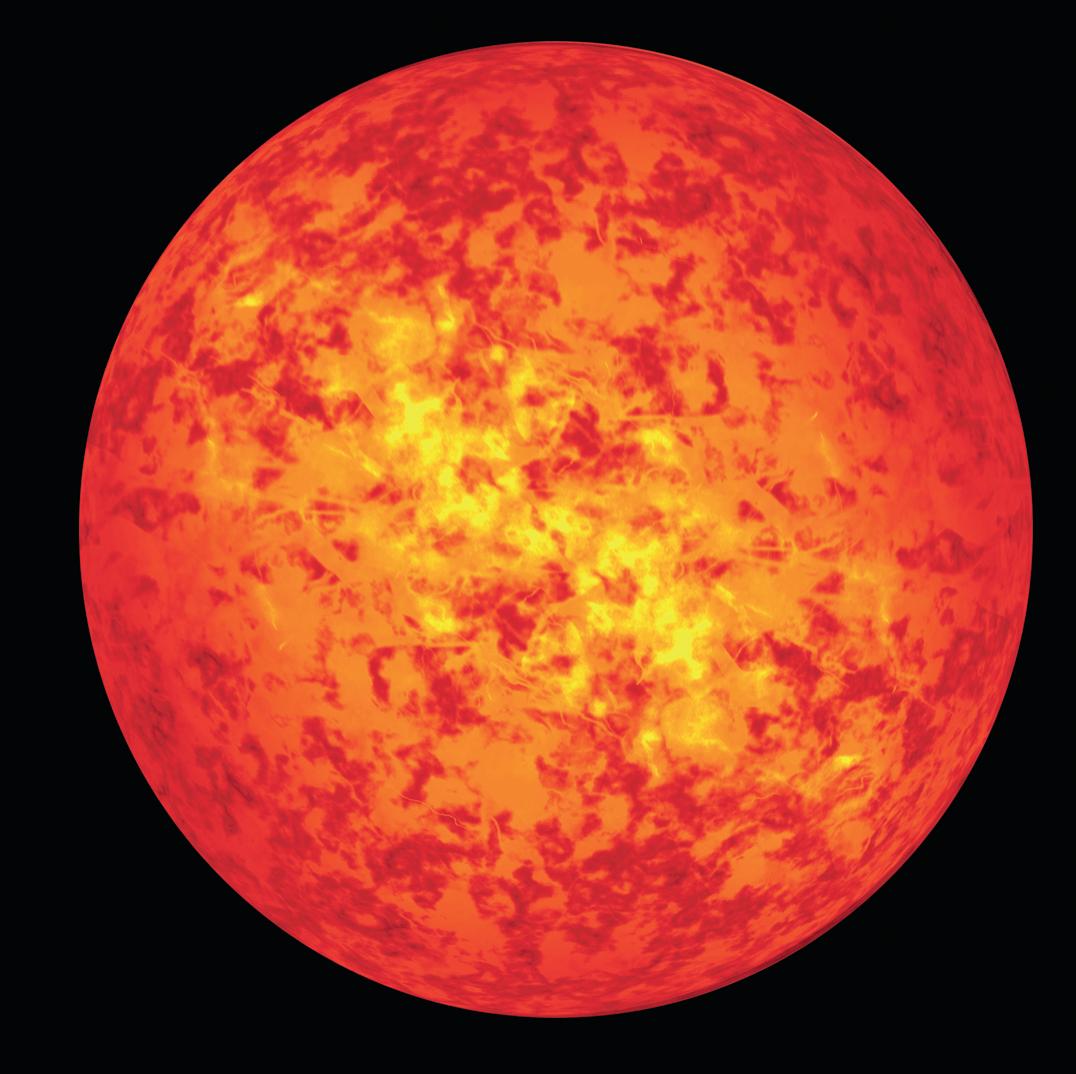 Figure 27 Most of the forces acting on the water-skier are electromagnetic. The tension in the tow rope, the drag from the air and water and the buoyancy from the water are all due to the interaction between charged particles.
Figure 27 Most of the forces acting on the water-skier are electromagnetic. The tension in the tow rope, the drag from the air and water and the buoyancy from the water are all due to the interaction between charged particles.
The probability of this reaction occurring is incredibly small; only 1 in every 1031 collisions between protons will result in fusion. This makes winning the National Lottery, with odds of around 1 in 107, look like a racing certainty! Even though a typical proton in the Sun undergoes 1014 collisions every second, it will take an average of 10 billion years before it eventually reacts in this way with another proton. Without this highly improbable reaction, there would be no sunshine and no life on Earth.
QUESTIONS
18. Which forces act on a proton in a nucleus of carbon? Which forces act on a neutron in the same nucleus?
19. Uranium atoms, which have 92 protons, are the largest that occur naturally. There are no naturally occurring elements with larger atoms and more protons. Why not?
20. Is the weak interaction badly named? Explain your answer.
21. Speculate on what atoms, nuclei and even the Universe would be like, if:
a. gravity was much stronger
b. the strong force was not as strong
c. the weak interaction was much weaker… or much stronger and longer range?
KEY IDEAS
› There are four fundamental interactions between particles: electromagnetic, gravitational, strong and weak.
› The strong interaction is short range (about 10−15 m) and acts inside the nucleus, holding nucleons together.
› The weak interaction is even shorter range (about 10−18 m) and is responsible for some forms of radioactivity.
› The electromagnetic force acts on charged particles and is responsible for holding atoms and molecules together.
› Gravity is also a fundamental force, but it is insignificant within the atom.
Moving on: Grand Unification Theories
In 1850, the renowned British scientist Michael Faraday carried out experiments to prove that the forces of magnetism and electricity were different aspects of the same force (Figure 30). More than a hundred years later, in 1967, Pakistani physicist Abdus Salaam and Americans Steven Weinberg and Sheldon Glashow put forward a theory that linked the weak interaction with the electromagnetic force. The theory predicted the existence of three new particles, the W+, W– and Z0 particles. In 1983, these particles were discovered by Carlo Rubbia’s team at CERN in Geneva. The results were in such good agreement with the theory that the ‘electroweak theory’ is now widely accepted.
Grand Unification Theories (GUTs) link the electroweak and strong interactions together. Most of these predict that the proton is not stable at all, but will decay with a mean lifetime of 1030 years. These decays are difficult to detect because the lifetime of the Universe so far is only 1010 years. Physicists are looking in huge tanks containing about 8000 tonnes of water, trying to catch the 1 proton per day that should decay. The results so far are inconclusive.
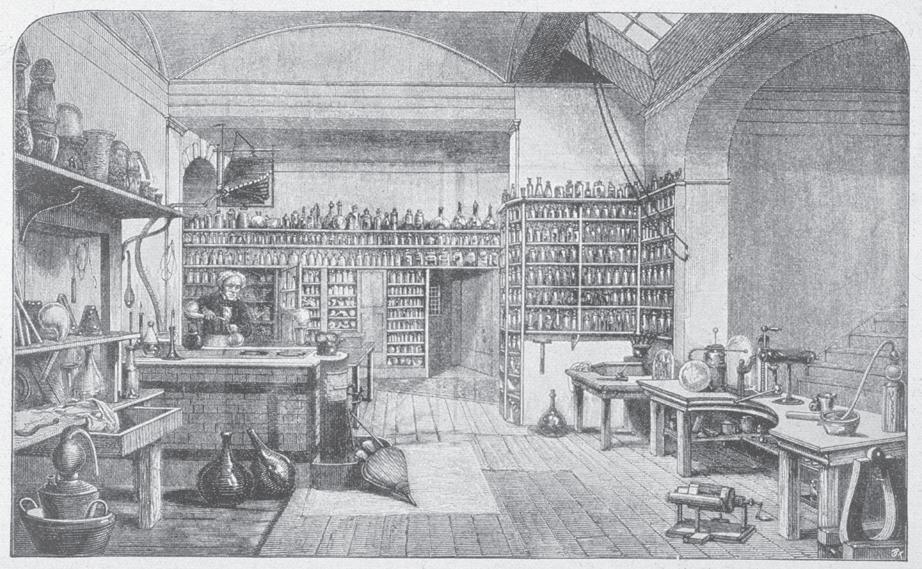 Figure 30 Michael Faraday felt that the different forces could be unified. After linking electricity and magnetism, Faraday tried to link gravity into the scheme but was unsuccessful. Nobody has succeeded in this since.
Figure 30 Michael Faraday felt that the different forces could be unified. After linking electricity and magnetism, Faraday tried to link gravity into the scheme but was unsuccessful. Nobody has succeeded in this since.
pRACTICE QUESTIONS
1. a. The nucleus of a particular atom has a nucleon number of 14 and a proton number of 6.
i. State what is meant by nucleon number and proton number.
ii. Calculate the number of neutrons in the nucleus of this atom.
iii. Calculate the specific charge of the nucleus.
b. The specific charge of the nucleus of another isotope of the element is 4.8 × 107 C kg–1.
i. State what is meant by an isotope.
ii. Calculate the number of neutrons in this isotope.
AQA June 2012 Unit 1 Q2
2. An atom of calcium, 48Ca, is ionised by removing two electrons.
a. State the number of protons, neutrons and electrons in the ion formed.
b. Calculate the charge of the ion.
c. Calculate the specific charge of the ion.
AQA June 2013 Unit 1 Q1
3. Tritium and deuterium are isotopes of hydrogen.
a. State one difference between an atom of tritium and an atom of deuterium.
b. State one similarity between an atom of tritium and an atom of deuterium.
4. a. An atom of the radioisotope radium-226 is represented by the symbol 226Ra. Determine the number of protons, the number of neutrons and the number of electrons in a neutral atom of radium.
b. Radium-226 emits ionising radiation. Explain what ionising means.
c. Radium-226 is an alpha particle emitter; it decays to radon, Rn. Write out and complete this equation that describes the decay:
226Ra → ? ? Rn + ?
5. At room temperature, radium is a silvery, solid, metal. Radon is a gas. Both are alpha particle emitters. Explain why radon usually presents more of a hazard to human health.
6. Describe how you could demonstrate in the lab that alpha particles have a short range in air.
7. Rutherford was awarded the Nobel Prize for Chemistry in 1908 for his work on ‘The chemical nature of the alpha particles from radioactive substances’. Read this extract from his Nobel acceptance speech and answer the following questions.
“Shortly after his discovery of the radiating power of uranium by the photographic method, Becquerel showed that the radiation from uranium…possessed the property of discharging an electrified body. In a detailed investigation of this property, I examined the effect on the rate of discharge by placing successive layers of thin aluminium foil over the surface of a layer of uranium oxide and was led to the conclusion that two types of radiation of very different penetrating power were present. The conclusions at that period were summed up as follows:
“ These experiments show that the uranium, radiation is complex and that there are present at least two distinct types of radiation – one that is very readily absorbed, which will be termed for convenience the α -radiation, and the other of a more penetrative character, which will be termed the β -radiation. When other radioactive substances were discovered, it was seen that the types of radiation present were analogous to the β and α -rays of uranium and when a still more penetrating type of radiation from radium was discovered by Villard, the term γ -rays was applied to them. ”
a. In his experiments described in this extract, Rutherford could only identify two distinct types of radiation, although he was aware that there could be more. Suggest a reason why he was only able to identify two types.
b. Later in the speech, Rutherford describes how he showed that alpha and beta radiation carry opposite charges. Explain, briefly, how you would do that.
c. How could you show that α rays from one substance were the same as α rays from another?
d. The bulk of Rutherford’s paper describes how he determined the nature of alpha particles. Read his concluding paragraph, which follows here. Explain what Rutherford got right, and what we now know is wrong, with his ideas.
“Considering the evidence together, we conclude that the α-particle is a projected atom of helium, which has, or in some way during its flight acquires, two unit charges of positive electricity. It is somewhat unexpected that the atom of a monatomic gas like helium should carry a double charge. It must not however be forgotten that the α-particle is released at a high speed as a result of an intense atomic explosion, and plunges through the molecules of matter in its path. Such conditions are exceptionably favourable to the release of loosely attached electrons from the atomic system. If the α-particle can lose two electrons in this way, the double positive charge is explained.”
8. Describe an experiment that you could carry out in the lab to demonstrate that the radiation from a sample of uranium contained three distinct types of radiation. Identify the potential hazards in carrying out the experiment and explain what steps you would take to reduce these hazards.
9. Select the correct description. Thomson is credited with the discovery of the electron because he showed that cathode rays were a stream of particles:
A that were all negatively charged
B that all had the same mass
C that all had the same charge
D that all had the same specific charge.
10. Rutherford’s scattering experiment used alpha particles to probe thin gold foil. Which of these conclusions did he make?
A Gold atoms are positively charged.
B The mass and positive charge of the atom are concentrated in a small region of the atom.
C The mass and the positive charge of a gold atom are uniformly distributed.
D There are large gaps between atoms.
11. Which of these statements about heavy nuclei is false?
A Very heavy nuclei have more neutrons than protons.
B Very heavy nuclei are denser than lighter nuclei.
C Very heavy nuclei are more likely to be alpha emitters than lighter nuclei.
D Very heavy nuclei are larger than light nuclei.
12. The fundamental forces operate at different ranges. Which of these represents the correct order, from shortest range to longest range?
A weak interaction – strong interaction – electromagnetic interaction
B strong interaction – electromagnetic interaction – weak interaction
C electromagnetic interaction – weak interaction – strong interaction
D weak interaction – gravity – strong interaction
13. The specific charge on a particle is measured as +48×106 C kg –1. Which of the following is it likely to be?
A a carbon-12 ion
B an electron
C an alpha particle
D a beta particle
14. Which of these statements about the strong nuclear force is always false?
A It acts between a neutron and a proton.
B It acts between two protons.
C It holds the nucleus of an atom together.
D It holds electrons in their orbits in atoms.
Stretch and challenge
15. The radius of a nucleus, r, is related to its nucleon number, A, by
where
is a constant.
Table Q1 gives the values of the nuclear radius for some isotopes.
a. Plot a straight-line graph to confirm that
using the data in Table Q1. From your graph, obtain a value for r0 and estimate the uncertainty in this value.
b. Taking the mass of one nucleon as 1.67×10–27 kg, estimate the density of nuclear matter. State any assumption that you have made.
